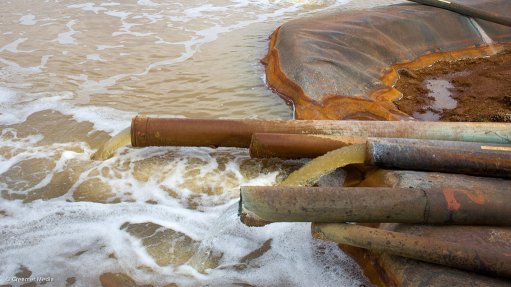
Photo by: Megan van Wyngaardt
JOHANNESBURG (miningweekly.com) – A final upgrade to the high-density sludge (HDS) water treatment plant at Central Rand Gold’s (CRG’s) operations would be completed this year.
In a statement outlining its results for the year ended December 2014, the company noted that, although the HDS plant, which started operating in May 2014, had started off well, with a drop in the water table recorded in June last year, the Trans-Caledon Tunnel Authority had reduced the flow rate of the plant to strengthen the mechanical components of the two 42-million-litre thickeners.
This upgrade was required to improve, manage and control the acid mine drainage sludge and ensure the longer-term improved performance of the HDS plant.
“While the pumping solution is showing positive signs of basin-wide dewatering, which will ultimately greatly benefit the company, the delays in the initiation of the pumping and the subsequent teething problems have had a temporary but significant impact on our underground mining operation,” CRG stated.
Underground mining had been halted in October 2014, owing to rising water levels.
As a result, underground production for the year ended December 2014, was 99 546 t at an average grade of 3.1 g/t.
“[We] have been carefully gathering information regarding HDS performance and water level movement at our mining operations. It seems that if the flow rate can be maintained at about 60-million litres a day, which equates to 80% of nameplate capacity of the HDS plant, a reduction in the water level occurs,” the company added.
It highlighted that since March this year, the flow rate had been fairly consistently maintained at about 72-million litres a day, resulting in a drop in the water table of about 4.5 m, from March to end of May.
“[This] is very positive as it indicates that the Central basin water level can be [lowered], even during the rainy season,” CRG pointed out.
Meanwhile, CRG said the company’s transition from underground mining to surface mining, in 2014, was “undoubtedly a painful process”.
However, it noted that the exploration work undertaken in the year under review had put the company on a steady footing while it waited to restart underground mining in 2016.
With just under 400 000 t of opencast potential and other surface mining opportunities outside its mining right area, CRG believed that, based on its smaller organisational structure, it could remain operationally sustainable during this time.
Cash resources at the end of the year stood at $900 000.
CRG noted that the rising water table and the cessation of underground mining had negatively impacted the company’s financial performance for the 2014 financial year, leading to a loss of $15.27-million, compared with $14.79-million the year before.